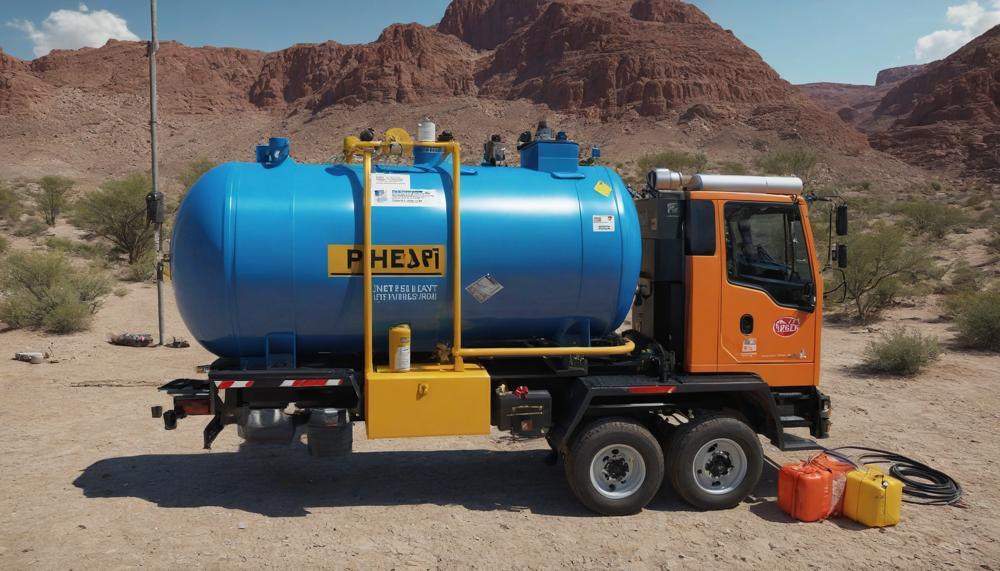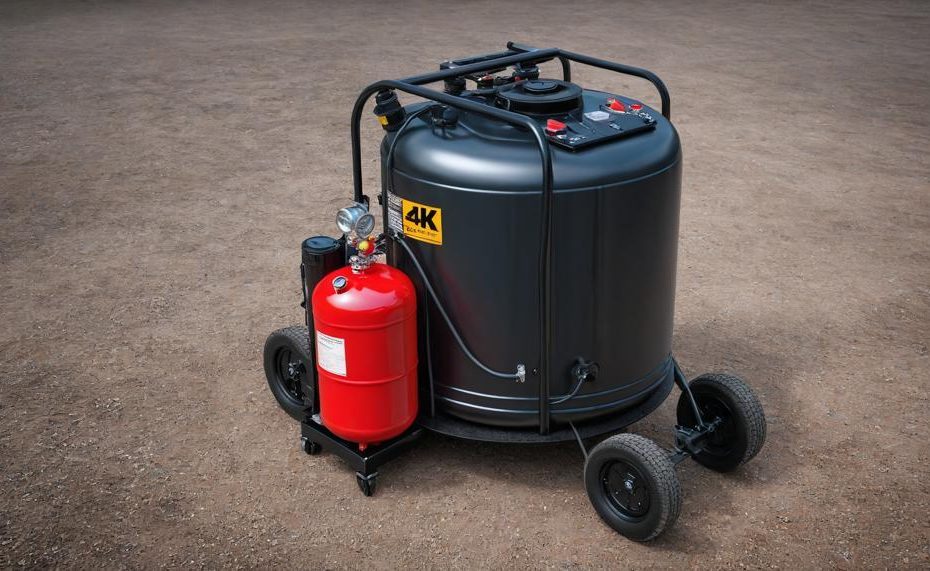Got an empty helium tank sitting around and not sure what to do with it? You’re not alone. Proper disposal of helium tanks is essential to ensure safety and environmental protection. Whether it’s leftover from a birthday party or an event, handling it the right way is crucial.
First, make sure the tank is completely empty. Shake it gently and listen for any hissing sounds. If it’s silent, you’re good to go. Next, safely remove the valve with a wrench, ensuring you’re wearing protective gloves.
Then, release any remaining gas by attaching a balloon to the valve and opening it slowly. Finally, puncture the tank in a well-ventilated area, label it as “empty,” and follow your local hazardous waste disposal guidelines. Avoid tossing it in regular trash – this can be dangerous and harmful to the environment. Here’s a quick rundown of the key steps:
- Check the tank is completely empty by shaking it.
- Remove the valve using an adjustable wrench.
- Release any remaining gas by attaching a balloon and slowly opening the valve.
- Puncture the tank in a well-ventilated area.
- Label the tank as “empty” or “deflated.”
- Dispose of the tank at a designated hazardous waste facility or return it to the supplier.
Following these steps not only ensures your safety but also helps protect the environment. Remember, if in doubt, consult your local waste management authority for specific guidelines. Proper disposal is a small step with a big impact.
Contents
Can You Recycle Helium Tanks?
The steps for properly recycling a helium tank are as follows:
- Ensure the tank is completely empty by releasing all remaining gas into a well-ventilated area.
- Remove any attachments or labels from the tank.
- Check with local recycling centers or scrap metal yards for proper disposal methods.
- Never throw the tank in the trash or curbside recycling bins.
- Properly dispose of any leftover helium balloons.
- Label the tank as “empty” or “deflated.”
- Puncture the tank to prevent anyone from attempting to use it again.
- Follow your local guidelines for hazardous waste disposal.
- Consider returning the tank to the supplier or store where it was purchased.
Step One: Gather necessary supplies.
To properly dispose of a helium tank, gathering the necessary supplies is the first step. The correct supplies ensure the disposal process is safe and environmentally responsible. Here’s what you need:

| Supply | Description | Purpose |
| Puncturing or Emptying Device | Devices such as a hammer, screwdriver, or a helium tank regulator. | To safely puncture the tank or release the remaining gas. |
| Protective Gear | Gloves, goggles, and face masks. | To protect from potential injuries and exposure to chemicals. |
| Well-Ventilated Area | An outdoor space or a room with good ventilation. | To safely release any residual gas. |
| Large Plastic Bag or Container | A sturdy bag or container to collect metal pieces. | To safely transport the tank pieces to a recycling center. |
| Recycling Center Information | Contact details of local recycling centers that accept steel. | To know where to take the disposed tank for recycling. |
| Additional Supplies (if required) | Hazardous waste disposal sticker or permit. | Depending on local regulations, for legal disposal. |
Explanation:
- Puncturing or Emptying Device: Helium tanks must be emptied of gas before disposal. Using a proper device ensures the tank is safely punctured, releasing any remaining helium without causing harm.
- Protective Gear: Safety is paramount. Protective gear such as gloves, goggles, and masks shield you from potential risks during the puncturing process.
- Well-Ventilated Area: Working in an open or well-ventilated space prevents inhalation of any residual gas, which could be hazardous.
- Large Plastic Bag or Container: After emptying and puncturing, store the tank and its parts in a secure container for easy transportation and to prevent accidents.
- Recycling Center Information: Knowing where to take the tank ensures it is recycled properly. Helium tanks are made of steel, which is recyclable, contributing to sustainable waste management.
- Additional Supplies: Depending on local laws, you might need specific permits or stickers to legally dispose of the tank.
Proper disposal of a helium tank not only follows safety protocols but also supports environmental conservation.
Step Two: Empty the helium tank
Properly emptying a helium tank for disposal is a crucial step to ensure safety and environmental responsibility. Follow these steps meticulously to make sure the tank is completely emptied before you proceed with its disposal:
| Step | Description | Note |
| 1 | Move to a Well-Ventilated Area | Ensure proper air flow |
| 2 | Secure the Tank | Prevent tipping |
| 3 | Attach a Balloon to the Nozzle | Check for leaks |
| 4 | Open the Nozzle | Release helium gas |
| 5 | Monitor the Release | Ensure no more gas |
| 6 | Confirm the Tank is Empty | Double-check for safety |
| 7 | Mark the Tank | Indicate it is empty |
Step Three: Remove the nut and nozzle
The best way to safely remove the nut and nozzle from a helium tank before disposing of it properly involves a few careful steps. This process ensures both your safety and the correct handling of the tank.
- Ensure the Tank is Empty: Before beginning, make sure the tank is completely empty. This can be done by fully opening the valve and releasing any remaining helium. Attach a balloon to the nozzle to capture any gas, confirming the tank is empty when the balloon deflates.
- Use Proper Tools: To remove the nozzle, you’ll need an adjustable wrench. Place the wrench around the nut securing the nozzle to the tank.
- Turn Counterclockwise: Gently turn the wrench counterclockwise to loosen the nut. If it’s too tight, apply steady, even pressure rather than jerking it to avoid damaging the threads or the nozzle.
- Remove the Nozzle: Once the nut is loosened, unscrew it by hand and carefully remove the nozzle from the tank.
- Mark the Tank: For safety, it’s essential to mark the tank as empty. Punch a hole in the bottom to signify it is no longer pressurised and safe for disposal.
- Dispose of the Tank Properly: Check with your local recycling centres or hazardous waste facilities for disposal options. Many places have specific drop-off points for helium tanks.
Step Four: Remove relief disc
The first step in properly removing the relief disc from a helium tank before disposal is to ensure that the tank is completely empty. This can be done by releasing all remaining helium from the tank. Once the tank is empty, the nozzle can be removed from the tank. It is important to use proper tools and turn the nozzle counterclockwise to safely remove it from the tank.
After removing the nozzle, the next step is to properly dispose of the tank. Depending on your location, there may be designated recycling centers or services for helium tank drop-off. It is important to check with these facilities for availability and proper disposal methods.
If recycling is not an option, the tank can be disposed of as scrap metal according to local regulations. However, it is important to accurately follow safety precautions and gather information on proper disposal methods before doing so.
To dispose of balloons and helium tanks, it is important to empty them completely and remove the valve using an adjustable wrench. It is also recommended to create a hole at the bottom of the tank to indicate that it is empty.
Remember to always check for nearby recycling facilities for proper disposal of helium tanks whenever possible. However, if this is not an option, make sure to follow regional laws and dispose of the tank at a hazardous waste facility.
It should also be noted that opening a full helium tank without proper tools can be dangerous. And while empty tanks can often be mixed with regular recycling, it is important to make sure they are truly empty before doing so.
Step Five: Mark
To properly mark a helium tank for disposal, follow these steps to ensure safety and compliance with environmental regulations:
Ensure the Tank is Empty
Before marking, confirm the helium tank is completely empty. Open the valve to release any remaining gas, ensuring it’s fully depressurized. Wear protective gear such as gloves and safety glasses.
Label the Tank
Clearly label the tank with “EMPTY” or “SAFE FOR DISPOSAL” in bold letters. This indicates the tank no longer contains gas and is safe for handling.
Use the universal compressed gas symbol: a picture of a gas cylinder with an arrow pointing upwards. This symbol warns that the tank previously contained pressurized gas.
Mark Valves and Fittings
Label any attached valves or fittings as “EMPTY” or “SAFE FOR DISPOSAL” and include the compressed gas symbol. This ensures every part of the tank is properly identified.
Identify Potential Hazards
Mark the tank with any hazard information. Include details about the gas type, potential dangers, necessary precautions, and emergency contact information. This helps handlers understand and mitigate risks.
Follow Local Guidelines
Check local disposal facility requirements or municipal regulations for specific marking instructions. Adhere to these guidelines to ensure proper and legal disposal.
Alternatives To Disposable Helium Tanks
In today’s world where sustainability and environmental consciousness are becoming increasingly important, it is essential to consider alternatives to disposable helium tanks for party decorations. Here are some environmentally-friendly options to consider:
| Option | Description |
|---|---|
| Biodegradable Balloons | Made from natural latex that breaks down in the environment over time. They are a more eco-friendly option compared to traditional balloons made from plastic. |
| Paper Lanterns | These can be hung up and lit for a beautiful decoration, and they are also biodegradable. |
| Fabric Banners | Instead of using plastic banners, opt for fabric ones that can be reused multiple times. |
| Potted Plants | Use potted plants as centerpieces or decorations instead of balloons. Not only do they add a touch of greenery, but they can also be taken home and planted after the party. |
| Tissue Paper Pom-Poms | These are easy to make and can be reused for future parties. They are also biodegradable. |
| Origami Decorations | Get creative and use origami paper to create unique and eco-friendly decorations such as paper cranes or flowers. |
| Wooden Decorations | Use wooden cutouts or shapes as decorations instead of plastic ones. These can be repurposed or recycled after the party. |
| LED Lights | Opt for energy-efficient LED lights instead of traditional string lights. They use less energy and last longer, making them a more sustainable option. |
| Homemade Bunting | Use old fabric scraps or clothes to create bunting for a personalized and eco-friendly touch to your party decorations. |
| Natural Confetti | Instead of using plastic confetti, opt for biodegradable options such as dried flower petals or leaves. |
| Japanese Paper Balloons (Kamifusen) | These traditional paper balloons are easy to inflate and can be reused multiple times with proper care. They are also plastic-free and biodegradable. |
| No Decorations | Consider going decoration-free for your party and focus on creating a fun atmosphere with games and activities instead. This is the most eco-friendly option and can also save you money. |
By choosing these environmentally-friendly alternatives, you can still have a beautiful and fun party while reducing your environmental impact. Remember to always properly dispose of any decorations after use and to reuse or repurpose them whenever possible.
Conclusion
Properly disposing of a helium tank is a straightforward process that ensures both safety and environmental responsibility.
Start by confirming the tank is entirely empty: gently shake it and listen for any hissing sounds. If it’s silent, use a wrench to remove the valve while wearing protective gloves.
Attach a balloon to the valve and open it slowly to release any remaining gas. Once completely emptied, puncture the tank in a well-ventilated area, clearly label it as “empty,” and follow your local hazardous waste disposal guidelines.
Avoid discarding it in regular trash due to potential hazards. Additionally, consider recycling options by contacting local centers or returning the tank to the supplier.
This mindful approach not only guarantees your safety but also contributes significantly to environmental conservation.





